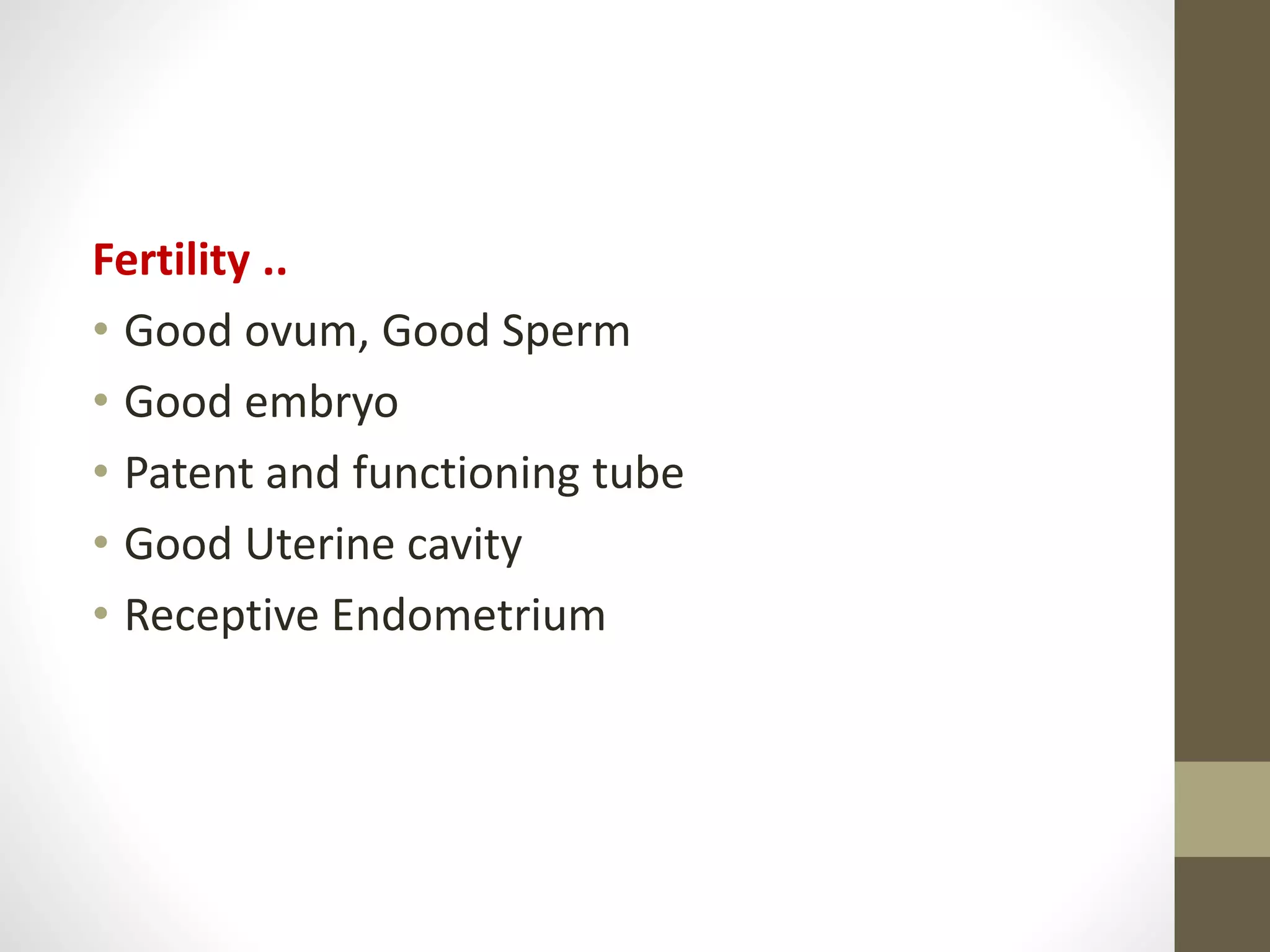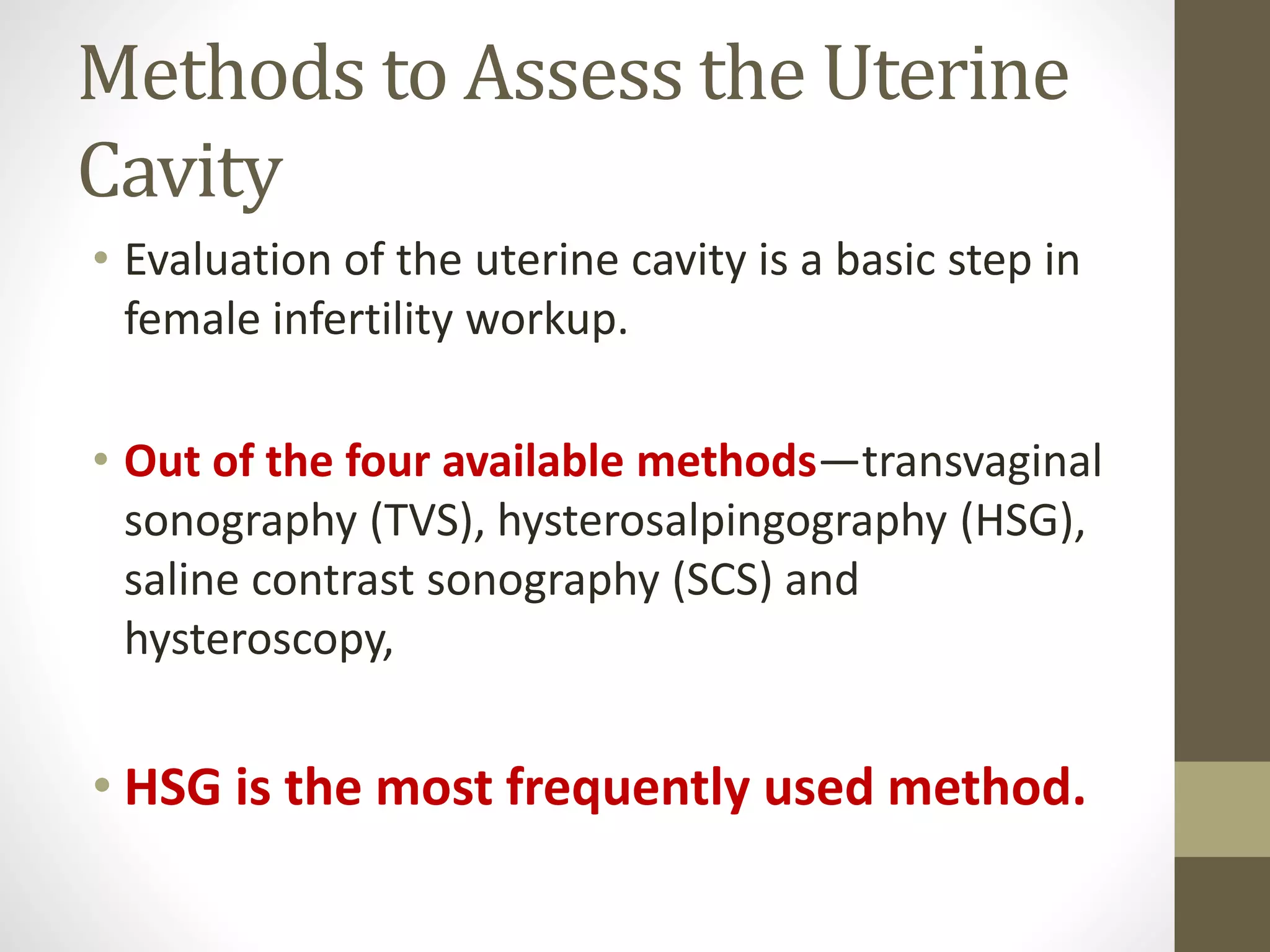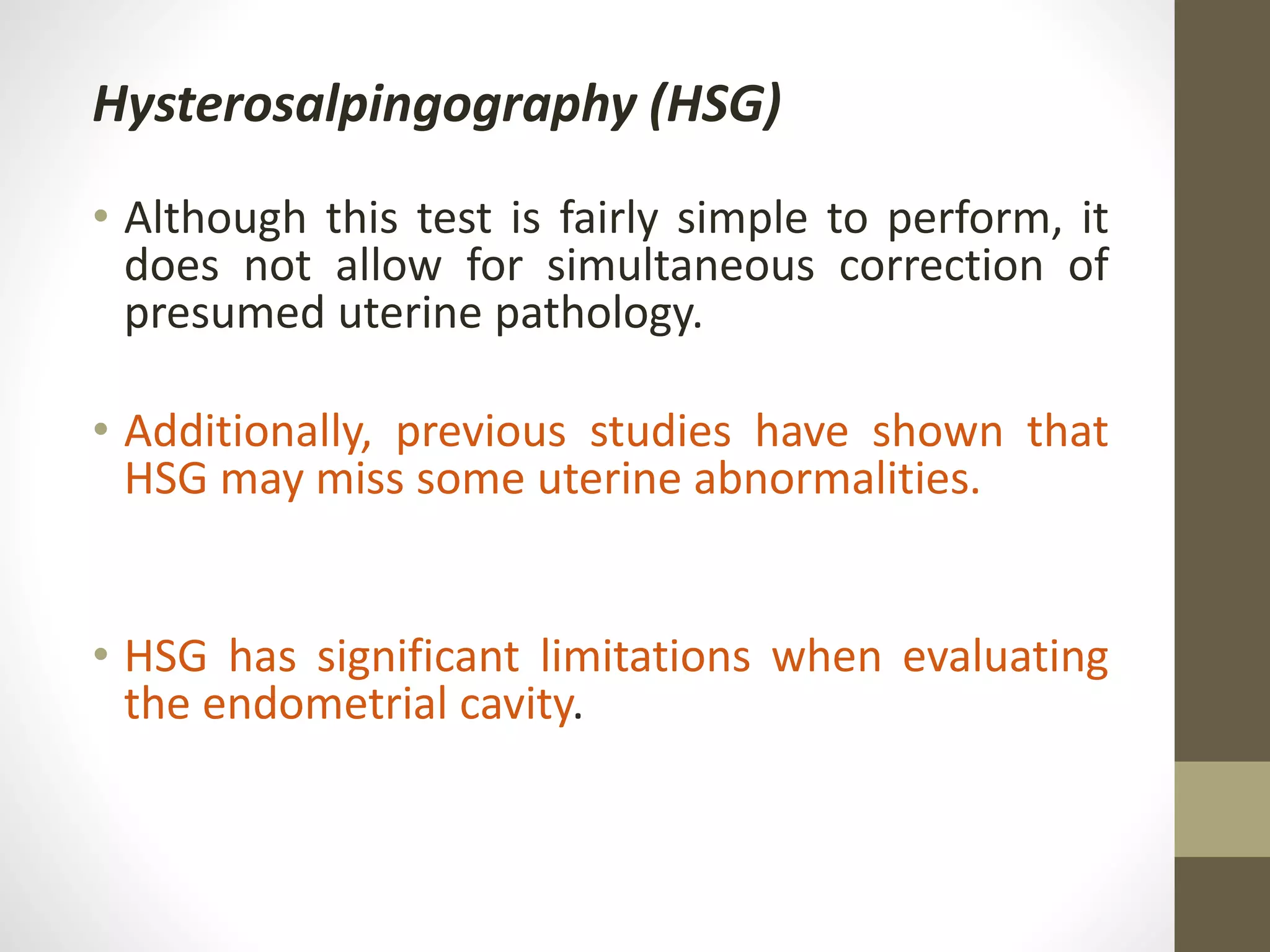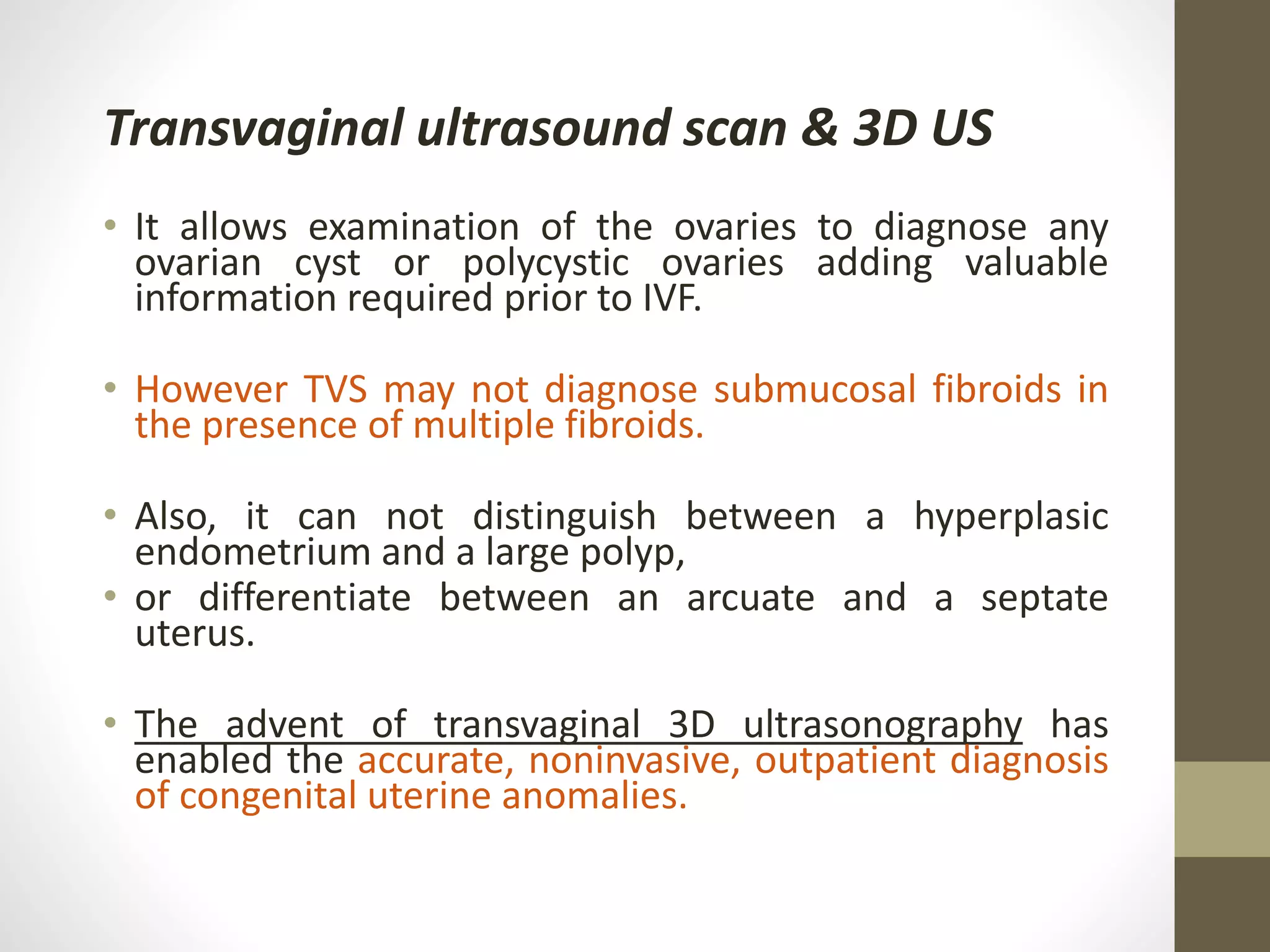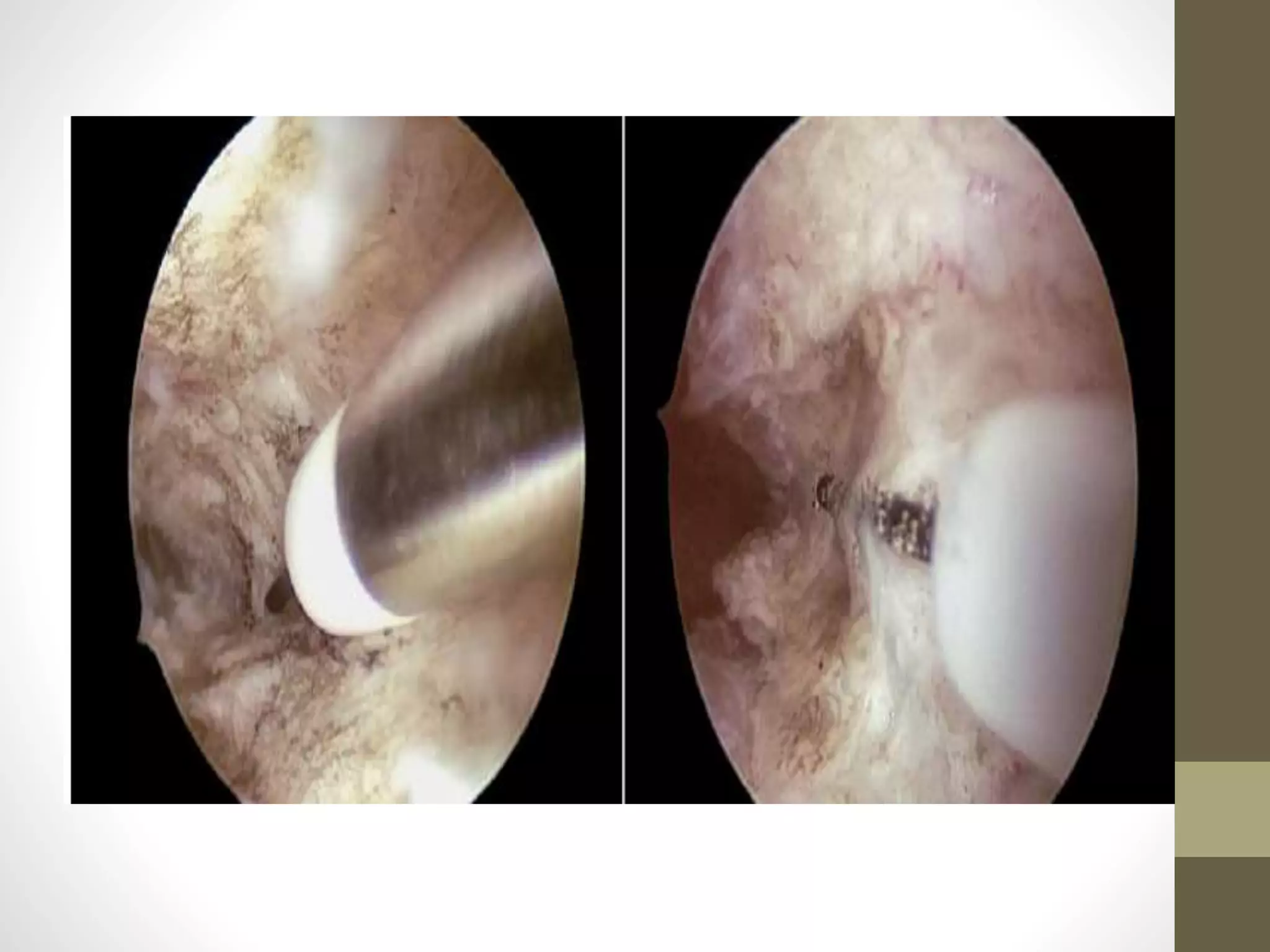Hysteroscopy is the gold standard for evaluating the uterine cavity for abnormalities that can cause infertility or recurrent pregnancy loss. Common findings include submucosal fibroids, polyps, septate uteri, adhesions, and chronic endometritis. Removal or repair of these abnormalities through hysteroscopy can improve fertility outcomes like pregnancy and live birth rates. Hysteroscopy also allows diagnosis and treatment to be performed simultaneously. While less invasive tests are options, hysteroscopy provides the most accurate assessment of the uterine cavity.

